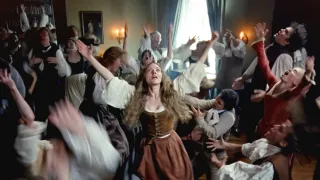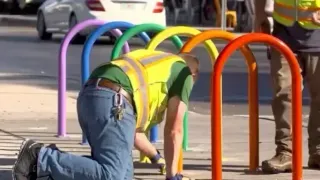April 20, 2018
Tradeoff: Faster Lines as Restaurants Forego Cash
Joyce M. Rosenberg READ TIME: 4 MIN.
The lunchtime lines at Dos Toros move faster these days - customers don't fumble for bills or coins, and employees don't make change. Since around New Year's, the Mexican food chain has been cashless.
"For the vast majority of customers, there's no reaction at all; they're already paying with their cards. And the significant majority of cash customers don't have any problem with it either," says co-owner Leo Kremer, who has 14 stores in New York and one in Chicago.
If people do try to use cash, employees explain the reasons for the change - faster service for customers, saving the business time and money.
The trend toward cashless small and mid-sized businesses is fairly new. Many of the companies adopting the policy are restaurants with menus and prices more upscale than fast-food chains, but service that aims to be almost as quick as a McDonald's or Subway. During a busy lunch hour with customers lined up at ordering stations and cashiers, forgoing cash means faster transactions.
Many business owners would rather be cashless. Cash actually costs money - banks charge fees for cash deposits and to handle coins. If businesses take in enough cash to justify pickups by armored car services, that's another cost, and given that restaurants can be a target for holdups, not one that can be eliminated. And counting and checking cash and preparing it for deposit takes up time a manager could spend with staff or customers.
"We feel a manager's time is so valuable, and it was being spent on what is only 10 percent of our revenue," says Kremer, who also says revenue at Dos Toros hasn't been hurt by the transition.
Millions of consumers use little or no cash. In a survey released last month by the financial services company Capital One, only 21 percent of 2,000 people questioned said cash was their most common way to pay for things.
But going cashless isn't a slam-dunk. Some customers who want to use cash point to a statement on paper money: "This note is legal tender for all debts public and private." However, the Federal Reserve says on its website that private companies can make their own policies about cash unless there is a state law saying otherwise. Massachusetts does have such a law.
Thomas Nguyen switched two of his restaurants to no-cash - and then had a change of heart. Nguyen, whose has three Peli Peli South African fine dining restaurants and a Peli Peli Kitchen fast casual location in the Houston area, transitioned one restaurant at the end of 2016 and the other last August. Less than 7 percent of his revenue was coming from cash, and he believed customers would largely be OK with the change.
But last month, Nguyen heard from staff at both locations that they were getting daily complaints. That, he says, goes against the idea of running a hospitality business.
"It's too common of an occurrence when somebody every day is getting surprised or inconvenienced," Nguyen says.
He's well aware that customers can find plenty of other places to go. "You can't compete if you think you're going to create a whole set of rules and expect people to follow them," he says.
One concern about cashless restaurants is that they exclude would-be customers who don't have bank accounts or credit cards. The Federal Deposit Insurance Corp. found in a 2015 survey that about 9 million households didn't have bank accounts. Nearly 60 percent of households without bank accounts or cards said they didn't have enough money to keep in an account.
Customers will be more understanding if store employees explain the rationale for going cashless, and how it might benefit them, says Utpal Dholakia, a marketing professor at Rice University's Jones Graduate School of Business.
"I think customers are very happy to trade off their ability to use cash to get this service in return," he says, and notes the popularity of apps that let people order and pay for food online or on their phones and bypass the line completely to pick it up.
David Friedman got many complaints when he began testing a no-cash policy at one of his eight Epic Burger locations in Chicago last June before deciding to go cashless permanently at all the stores.
"It has generated the most negative pushback of anything we've ever done," Friedman says. He estimates his revenue fell about 2 percent as people who wanted to pay cash left and never returned.
But Friedman isn't turning back. Epic Burger locations had an armed robbery, burglaries and break-ins - six incidents in all - in eight years.
"I made the decision to put my customers' and my employees' safety as my No. 1 priority," says Friedman, whose restaurants also got "dozens and dozens" of counterfeit bills from customers.
Friedman's revenue shortfall has been more than offset because he no longer pays for bank fees and 30 armored car pickups each week.
When Tender Greens went cashless earlier this year, it took other steps to improve the experience for customers, says Denyelle Bruno, president of the chain that has 28 stores in California, New York and the Boston area.
Customers no longer need to sign charge receipts under $25, and lines move faster since managers have more time to help out. Tender Greens, whose menu includes salads, sandwiches, fish and chicken, isn't seeing frustrated customers give up and leave the line, Bruno says.
Signs throughout the stores alert customers to the no-cash policy. But occasionally, people are still surprised when it's time to pay - and some have no other form of payment on them.
"We give the food to the guest" in those cases, Bruno says. "Our goal is never to turn people away when they get to that point."






